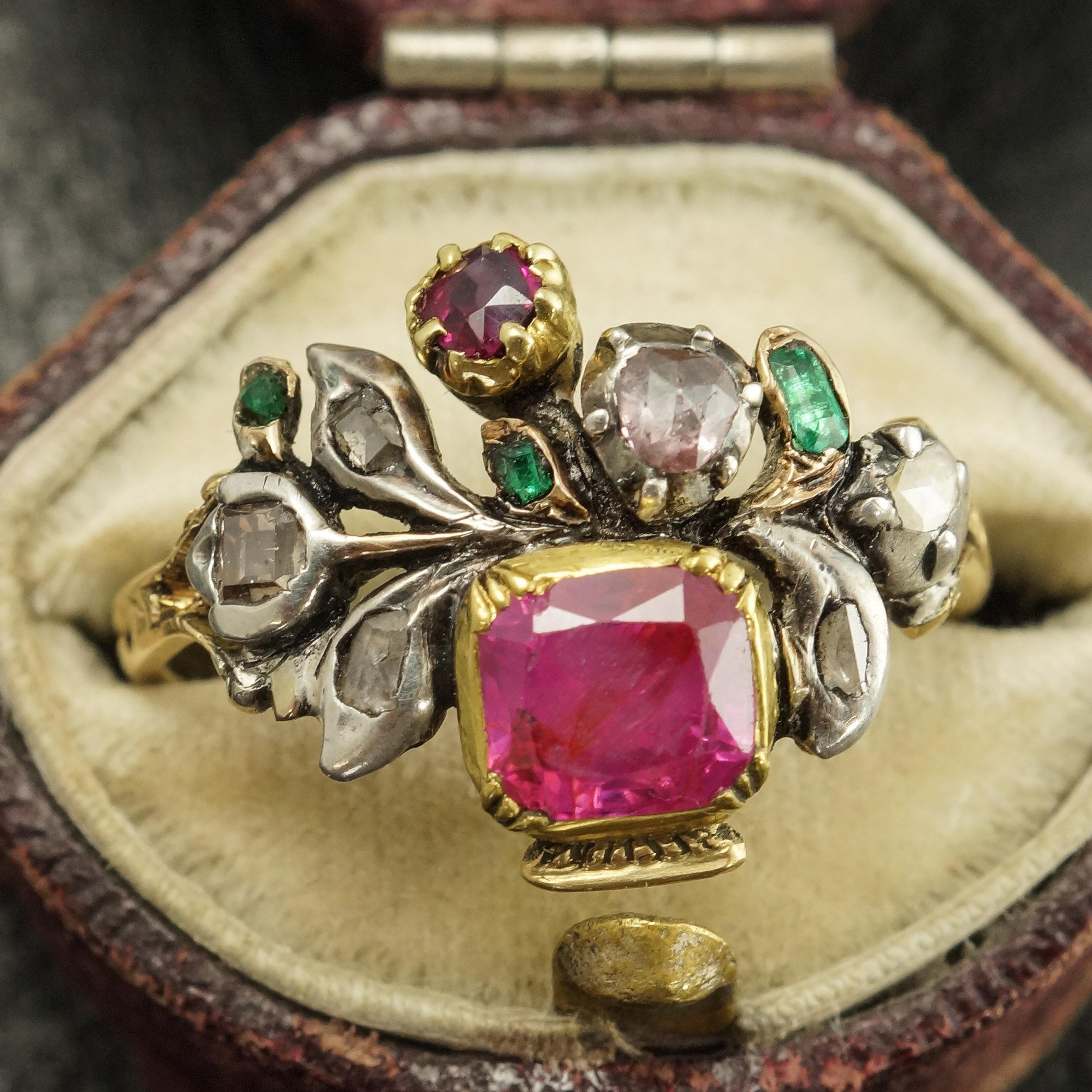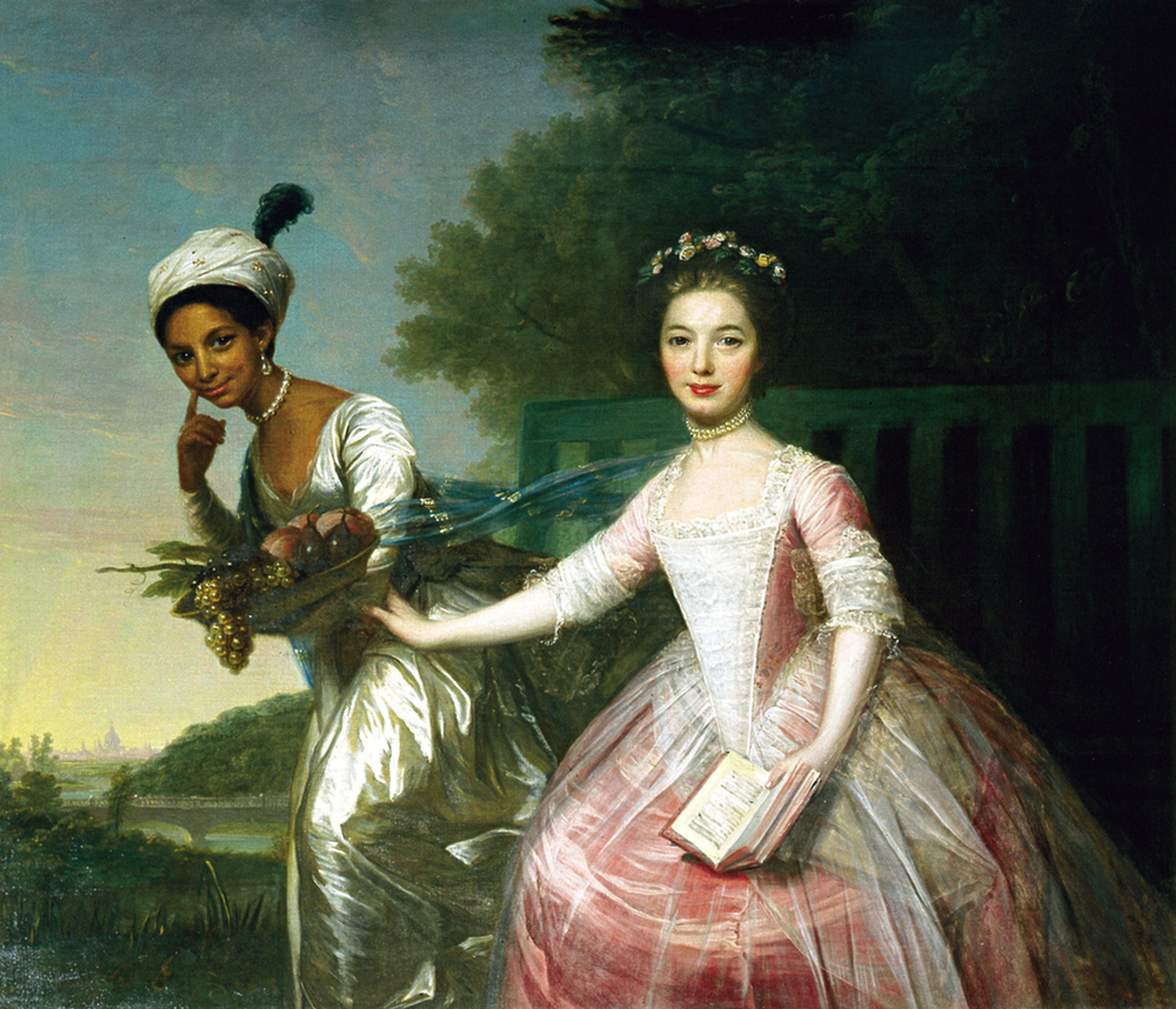
This covetable Georgian ring is known as a giardinetto/giardinetti (Italian for "little garden(s)"). These floral-themed rings reflect the mid 18th century taste for delicate, elegantly composed Rococo styles, a departure from the from the heavier and more ostentatious styles of earlier years. Giardinetti rings - sometimes fluid and asymmetrical, sometimes even and balanced - typically feature diamonds and small colored gemstones. These rare jewels were designed to compliment the floral fabrics that were in vogue in the mid to late 1700s. This spectacular example of the giardinetti style features a spray of flowers rendered in silver and gold and set with diamonds, emeralds, and a single red ruby. The bouquet stems from a footed vase set with a vibrant pink-hued natural ruby. Absolutely stunning and in immaculate condition.
thedetails
- Materials
20k yellow gold (tests), silver, 4 table cut diamonds, 2 rose cut diamonds (larger stone approx. .08ct), three flat cut emeralds, rubies (small approx .06ct, large pinkish ruby 5.7mm x 6mm)
- Age
c. 1760
- Condition
Excellent
- Size
US 6, can be sized for an additional fee of $90
Need more photos?
Send us an email to request photos of this piece on a model.

Aboutthe
GeorgianEra
1714 — 1837
As imperialist war raged in the Americas, Caribbean, Australia, and beyond, the jewelry industry benefited: colored gems from all over the empire became newly available. A mix of artistic influences from around Europe contributed to the feminine, glittering jewels of the era. Dense, ornate Baroque motifs from Italy showed up in Georgian jewelry, as did French Rococo’s undulating flora and fauna. Neoclassical style made use of Greek and Roman motifs, which were newly popular due to the recently uncovered ruins of Pompeii and Herculaneum. Lapidary methods improved: the dome-shaped rose cut was popular, as was the “old mine cut,” a very early iteration of today’s round brilliant cut.
The boat-shaped marquise diamond cut was developed around this time, supposedly to imitate the smile of Louis XV’s mistress, the marquise de Pompadour. Paste — an imitation gemstone made from leaded glass — was newly developed in the 18th century, and set into jewelry with the same creativity and care as its more precious counterparts. Real and imitation gems were almost always set in closed-backed settings, lined on the underside with thin sheets of foil to enhance the color of the stone and highlight it's sparkle. This makes Georgian rings tough for modern women to wear, especially on an everyday basis: genteel, jewelry-owning ladies of the 18th century were not famous for working with their hands like we are. Nor did they wash their hands as much as we do. Water will virtually ruin a foiled setting, so take special care with your Georgian ring. Very little jewelry from this period is still in circulation, and it's very difficult to repair.